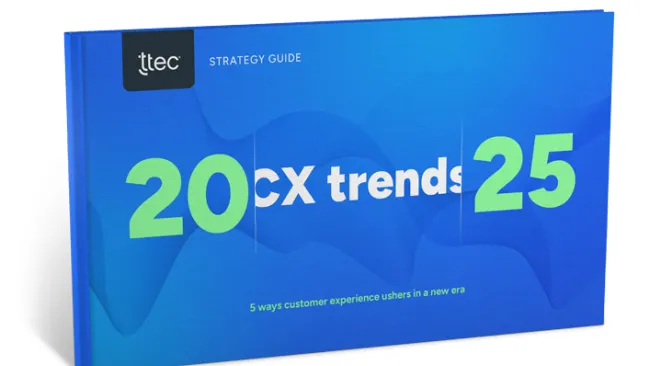It's not a secret that customers typically call customer support as a last resort but in recent weeks, companies across many industries have reported high increases in call volumes, which fluctuate depending on developments related to the COVID-19 pandemic. Companies need a fast way to reduce call volumes and still provide the support that customers are looking for.
On a recent webinar, "COVID-19 NOW: How to scale your resources and adapt to the new normal NOW," CX experts from TTEC and LivePerson explained how messaging and intelligent automation enable companies to do exactly that while maximizing resources.
Meet customers where they are
Unprecedented guidelines and restrictions are being updated constantly, adding to societal confusion and uncertainty. Further complicating matters is the fact that many contact centers, and walk-in offices are closed due to stay-at-home orders. However, when it comes to connecting with customers, the first rule of engagement is to meet them where they are. For many people, that’s on messaging platforms. Billions of people use messaging platforms such SMS, Facebook Messenger, Apple Business Chat, and WhatsApp as their go-to channels for interacting with friends and family.
This is where efficient messaging and intelligent automation strategies help brands connect with customers today, as well as lay the foundation for better interactions in the future. While agents can only speak with one customer at a time via telephone, messaging enables them to concurrently interact with at least four customers.
Live chat is not the same as messaging
On a live chat, a customer can chat with an agent through a pop-up window on a website or mobile app. The drawback with chat, however, is that a customer must wait with the window open for the agent to respond, and if either closes the window, the session is canceled and the interaction history lost. The customer would then have to start a new conversation from the beginning.
Messaging, on the other hand, allows for asynchronous, always-on communication between a customer and agent on a messaging platform, primarily through the customer’s mobile phone. Previous conversations are saved and resuming the conversation is as simple as texting a friend.
Deflect and intercept
One of the most effective ways to draw callers away from the telephone and reduce the queue is to present them with other options. Apple Business Chat and Google Business Messaging, for example, allow companies to present callers with two options: tap a phone number to call the business, or send a message. In our experience, when companies offer a message option next to calling, seven out of 10 choose messaging.
Automate, automate, automate
Use intelligent automation to identify and prioritize calls as they come in and to assist associates in the background. A chatbot, for example, could be programmed to collect authenticating information and answer basic questions. When the call is transferred to an agent, he or she already has the background information needed to assist the customer, allowing the agent to focus on the interpersonal interaction. A bot can also provide prompts and next-best recommendations to the agent in real time to further increase productivity and customer satisfaction.
Start small to move fast
With minimal IT resource support, messaging can be deployed, configured, and implemented in as little as one week. The key is to start with the basics; don’t try to do everything at once. Focus on standing up one channel before tacking on other technologies and systems. Also, introducing messaging to a subset of agents, such as your most versatile or multitalented agents, is a smart way to build up agent confidence and buy-in.
The key takeaway is that companies should be thinking about immediate and long-term strategies to ensure that they’re showing up for their customers. Using messaging and intelligent automation solutions to reduce call volumes quickly and support customers efficiently enables companies to both survive and thrive during these unprecedented times.
To learn more, watch the webinar on-demand: "COVID-19 NOW: How to scale your resources and adapt to the new normal NOW.”















